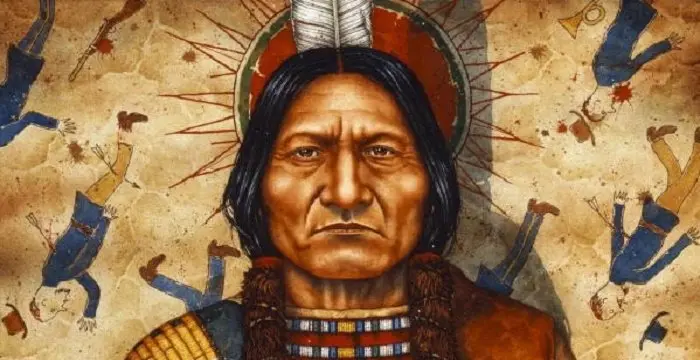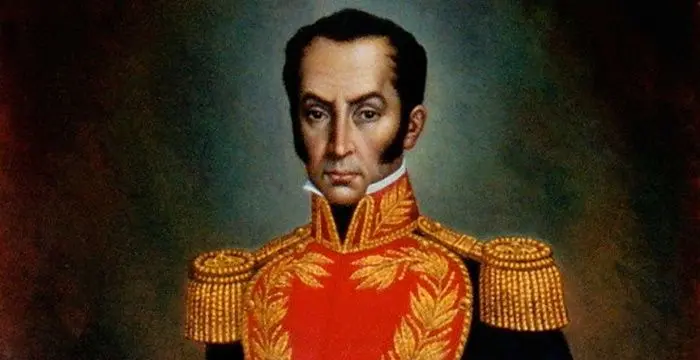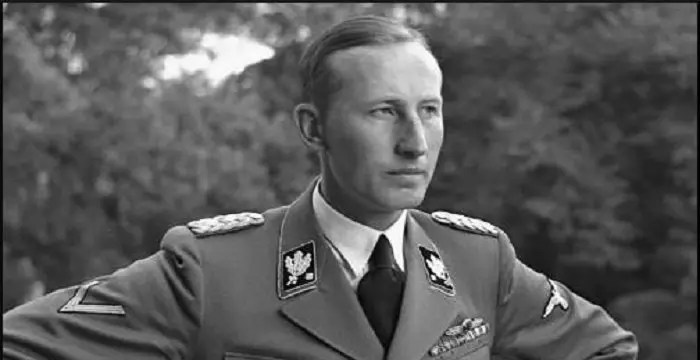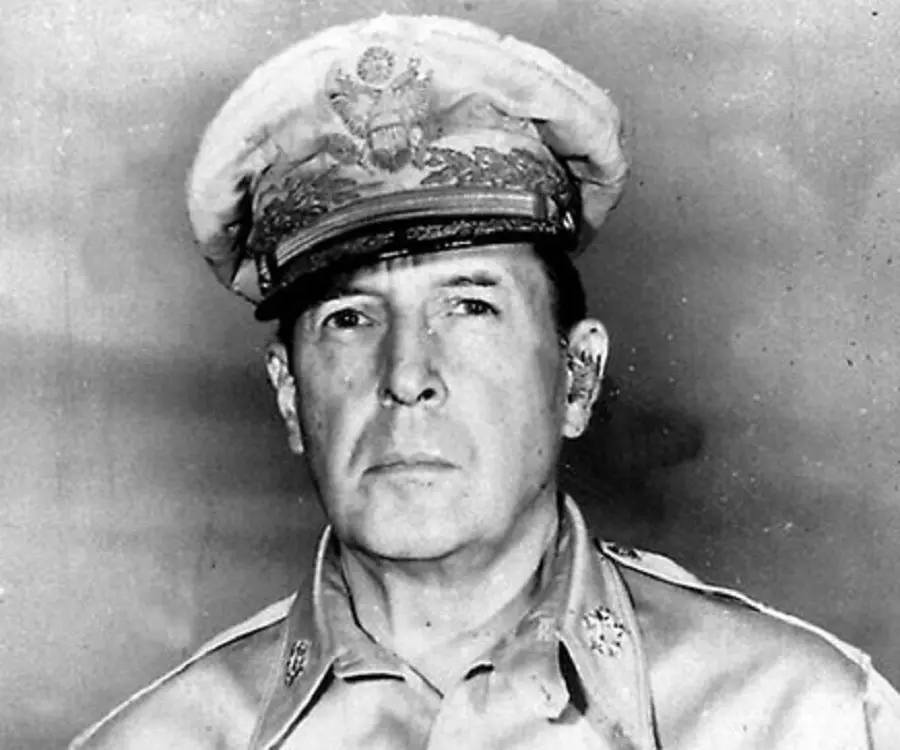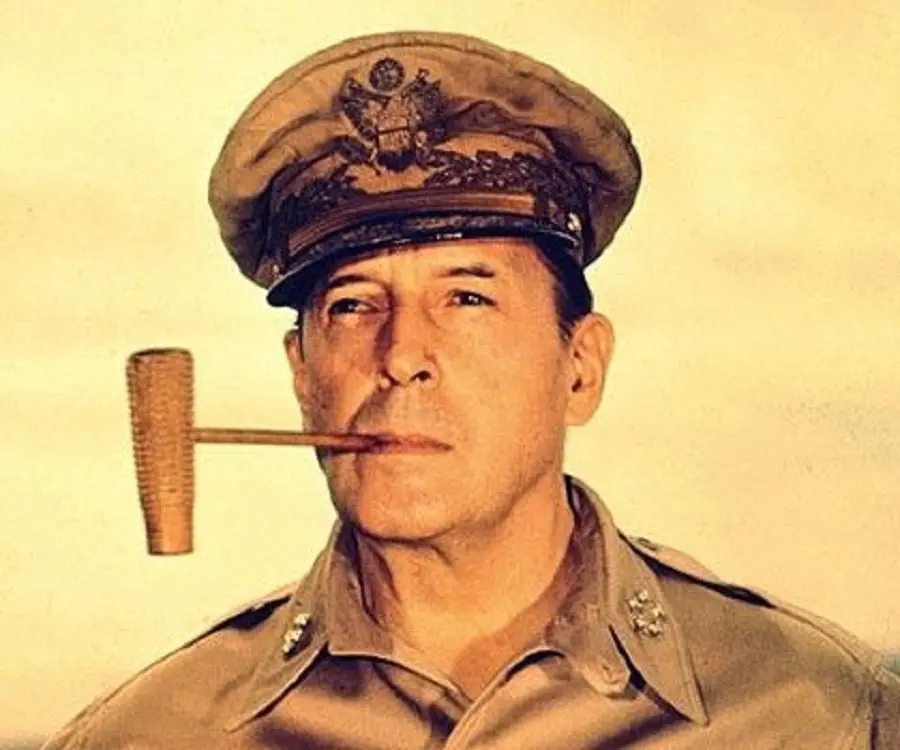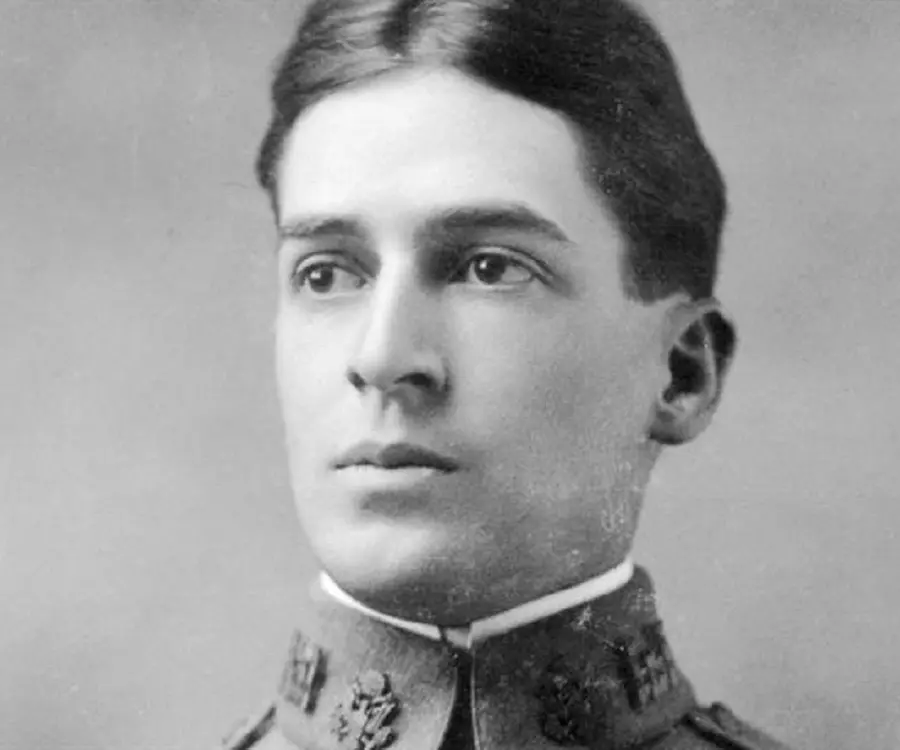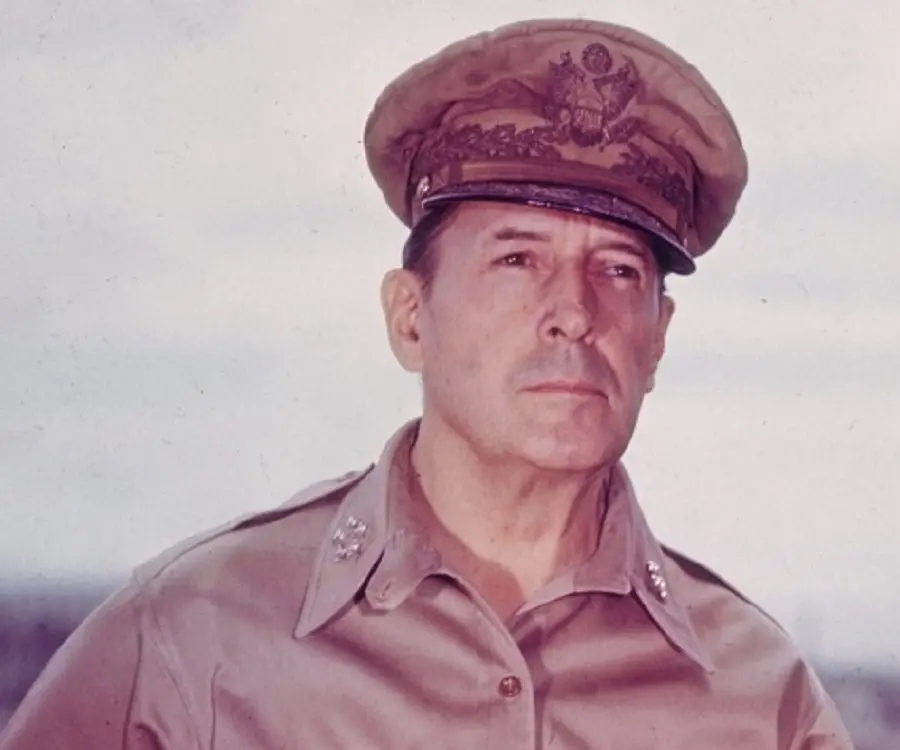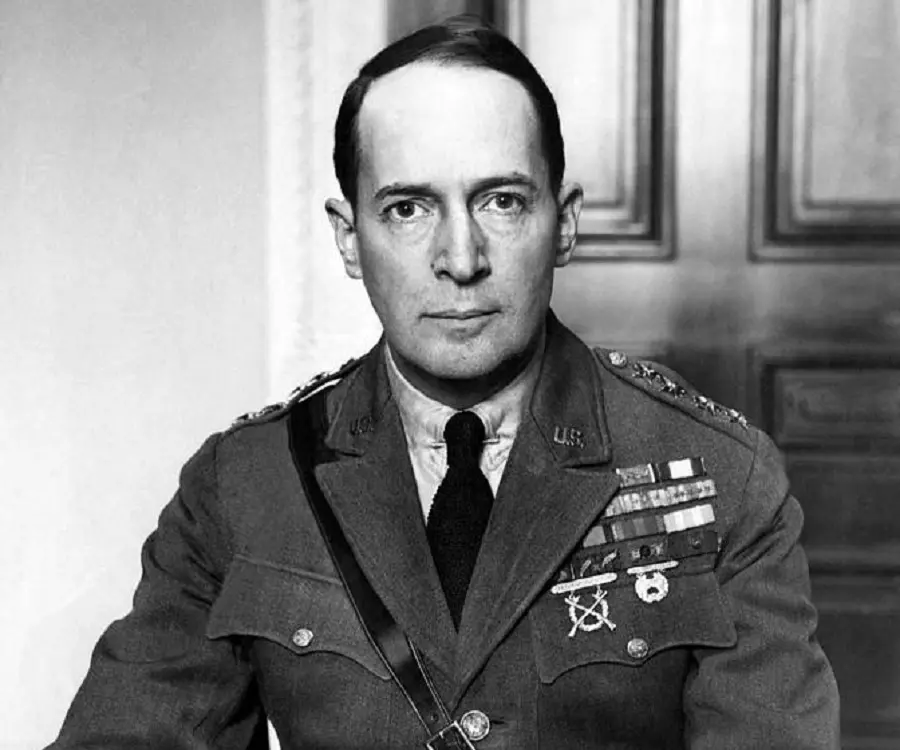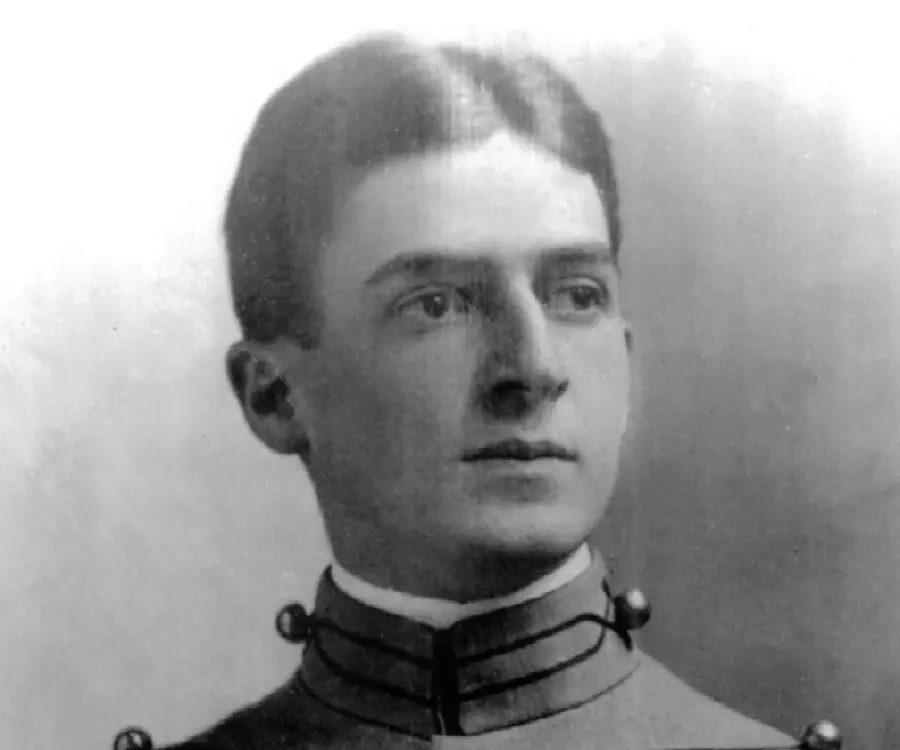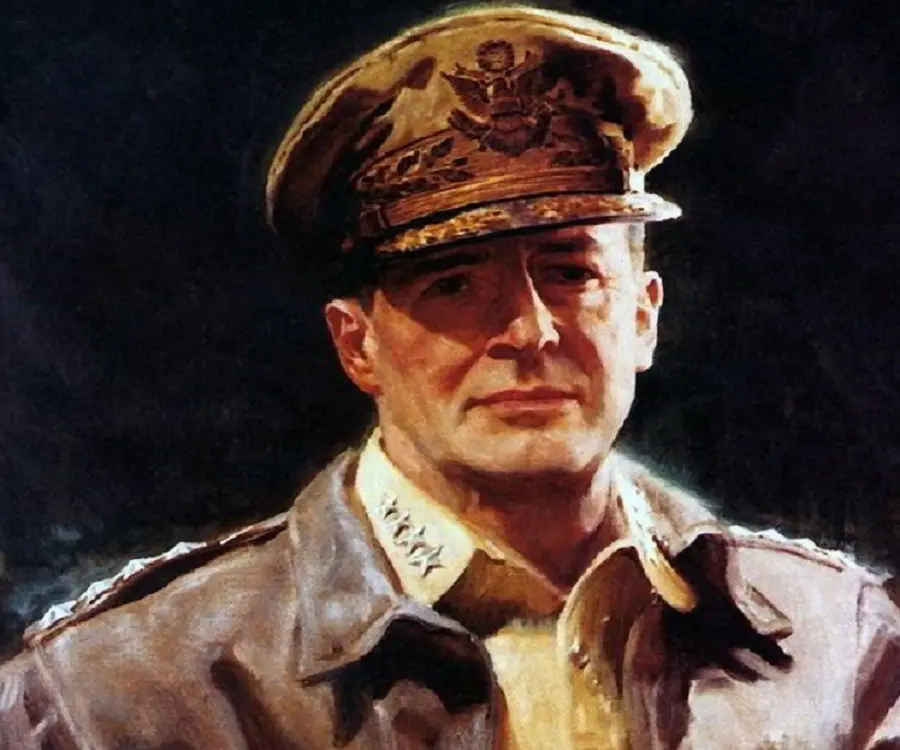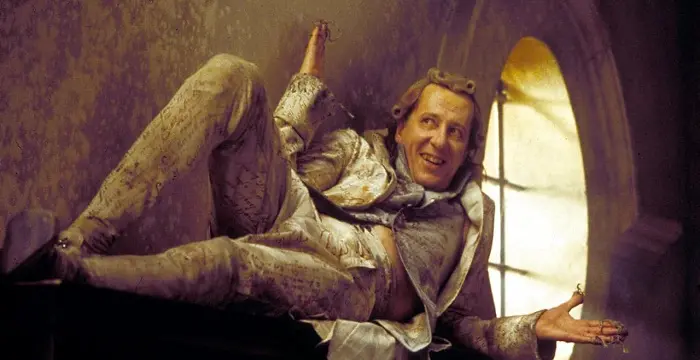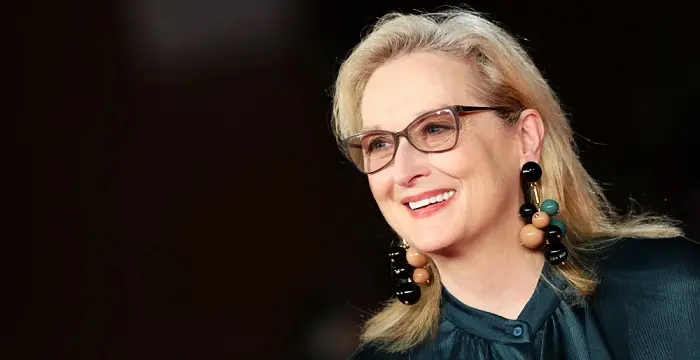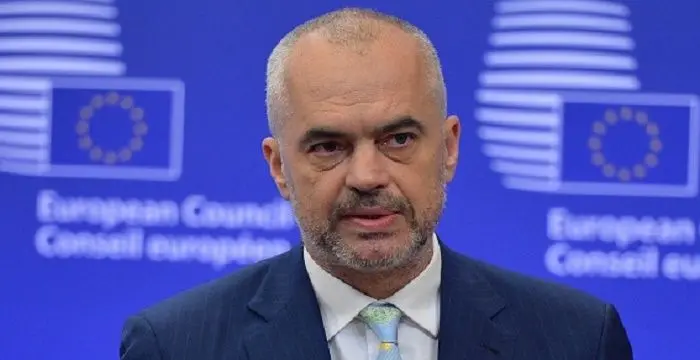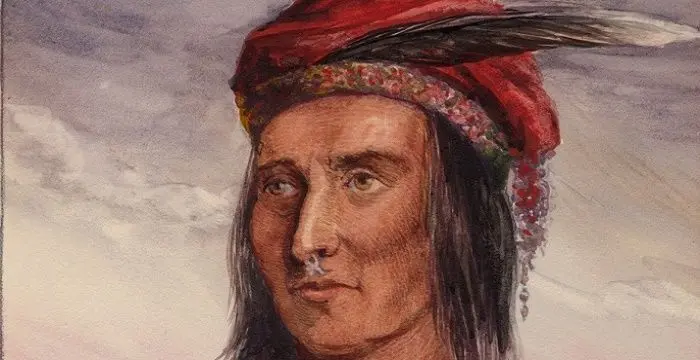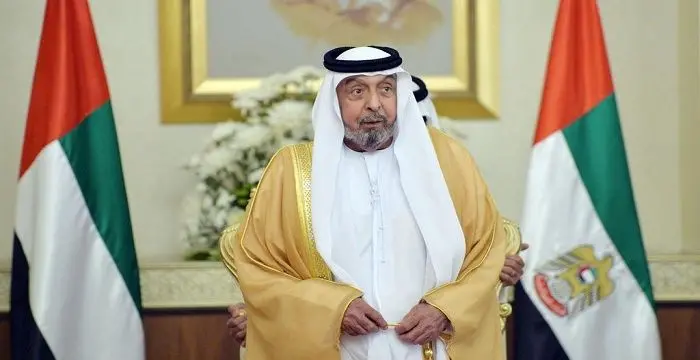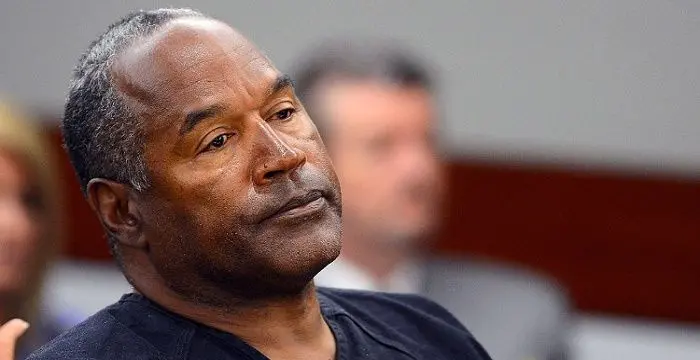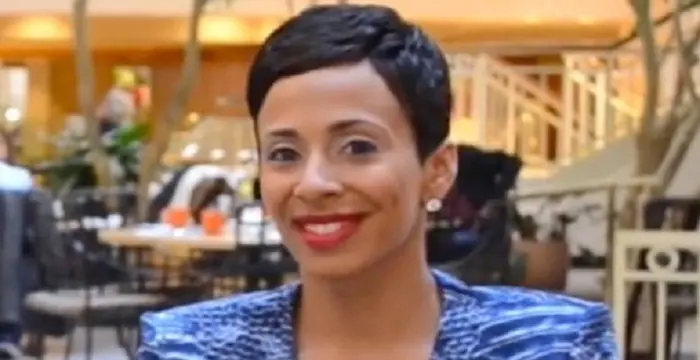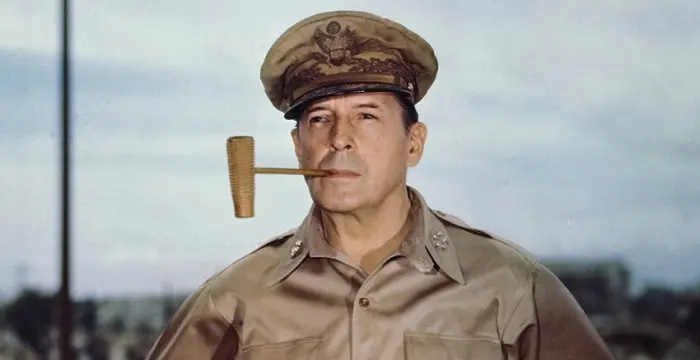
Douglas MacArthur - ESTP, Birthday and Family
Douglas MacArthur's Personal Details
Douglas MacArthur was an American general and Chief of Staff of the United States Army
| Information | Detail |
|---|---|
| Birthday | January 26, 1880 |
| Died on | April 5, 1964 |
| Nationality | American |
| Famous | Leaders, Military Leaders, ESTP |
| City/State | Arkansas |
| Nick names | Gaijin Shogun |
| Spouses | Henrietta Louise Cromwell Brook MacArthur (m. 1922–1929), Jean MacArthur (m. 1937–1964) |
| Siblings | Arthur MacArthur III, Malcolm MacArthur |
| Universities |
|
| Birth Place | Little Rock |
| Gender | Male |
| Father | Arthur MacArthur Jr. |
| Mother | Mary Pinkney Hardy MacArthur |
| Sun Sign | Aquarius |
| Born in | Little Rock |
| Died at Age | 84 |
// Famous Military Leaders
Sitting Bull
Sitting Bull was a Teton Dakota Indian chief who led Sioux tribes in their struggle for survival on the North American Great Plains.
Simon Bolivar
Simón Bolívar was a Venezuelan military leader who was instrumental in independence of several Latin American countries from the Spanish rule. This biography profiles his childhood, life, achievements and timeline.
Reinhard Heydrich
Reinhard Heydrich was a high-ranking German Nazi official during the World War II. Check out this biography to know about his childhood, family life, achievements and other facts about his life.
Douglas MacArthur's photo
Who is Douglas MacArthur?
Douglas MacArthur was an iconic figure in American military history and is till date, revered as a symbol of military excellence. Often popularly known as the ‘American Caesar’, MacArthur was one of the greatest war heroes of the United States of America. He served in the World War I, World War II, and Korean War and played a crucial role in The Pacific War. Born to a U.S. Army captain, Arthur MacArthur, Jr., he graduated as a top-ranking cadet from the United States Military Academy and began his career in the Army Corps of Engineers. A brilliant military strategist, MacArthur earned more than 100 military decorations both in the U.S and internationally in his lifetime. Some of his momentous decorations include, Honorary Knight Grand Cross of the Order of the Bath from Australia, the French Légion d'honneur and Croix de guerre and the Order of the Crown of Italy. He served as the General of the U.S. Army, Field Marshall of the Philippine Army and as the Chief of Staff of the United States Army.
// Famous ESTP
Megan Fox
Megan Fox is a popular American actress and model. This biography provides detailed information about her childhood, life, career, works, achievements, timeline, and trivia.
Marquis de Sade
Marquis de Sade was a French nobleman and an erotic novel writer. Check out this biography to know about his childhood, family life, achievements and fun facts about his life.
Meryl Streep
Meryl Streep is one of the most talented actors of the modern era. She has played the most real-life characters in the history of cinema. Check this biography to get details about her life, profile & timeline.
Childhood & Early Life
Douglas MacArthur was born in Little Rock, Arkansas, U.S. to an Army captain, Arthur MacArthur, Jr. and Mary Pinkney Hardy MacArthur. He had two elder siblings.
In 1889, his family relocated to Washington D.C, where he attended the Force Public School. Four years later, his father was assigned to work in San Antonio, Texas and he enrolled at the West Texas Military Academy.
On June 13, 1899, he joined the United States Military Academy at West Point, where he was one of the top-ranking cadets who graduated with honours.
Career
In October 1903, he was appointed as a junior officer in the United States Army Corps of Engineers. He was sent to Philippines as a part of the 3rd Engineer Battalion. Soon he was promoted as Second Lieutenant.
In 1904, his duty was cut short after he fell ill with malaria and dhobie itch, while he was on a survey in Bataan, Philippines. He later went to San Francisco, where he was appointed to work in the California Debris Commission.
In 1905, he was appointed as the Chief Engineer of the Division of the Pacific. In October the same year, he was ordered to travel to Tokyo to work as aide-de-camp to his father. In September 1906, he was ordered to report to the 2nd Engineer Battalion at the Washington Barracks.
In 1908, he received a posting to Fort Leavenworth on first command in Company K, 3rd engineer Battalion. Over the next two years, he became Battalion Adjutant and later Engineer Officer.
In 1911, he was promoted as captain and became head of the Military Engineering Department and the Field Engineer School. He was part of military activities in San Antonio, Texas and also served in Panama.
In 1914, he played a prominent role in the United States occupation of Veracruz, Mexico. For his relentless contribution, he was recommended as one of the contenders for the Medal of honour, but did not receive it.
On December 11, 1915, he was promoted to the post of a Major. The following year he was appointed as the Head of the Bureau of Information at the office of the Secretary of War.
In 1917, after war was declared with Germany, he federalised the state National Guard to build the army and formed the ‘The 42nd Infantry Division’, also called ‘Rainbow’. He was the Chief of Staff and Colonel of the unit.
In 1918, he was promoted as a Brigadier General and commanded the 84th Infantry Brigade. He proved his military leadership capabilities in Champagne-Marne, Saintt-Mihiel, Meuse-Argonne and Sedan offensives.
In 1919, he was appointed as the Superintendent of the U.S. Military Academy at West Point. He served there for a period of three years and proposed many reforms during his tenure.
In June 1923, he commanded the 23rd Infantry Brigade of the Philippine Division and played a pivotal role in putting an end to The Philippine Scout Mutiny by addressing their grievances.
In 1925, he became the youngest Major General in the army and commanded the IV Corps Area, but he experienced prejudice as he was the son of a Union Army officer. He was relieved off the post and later commanded the III Corps area.
He was appointed as the president of the American Olympic Committee and was assigned the task of preparing the U.S. team for the 1928 Summer Olympics in Amsterdam.
In 1930, he was appointed as the Chief of Staff of the United States Army with the rank of a general. He developed new mobilisation plans during the Great Depression and expelled The Bonus Army, made up of war veterans who demanded cash for their service certificates.
In 1935, he was made field marshal by President Franklin D. Roosevelt and sent as a military adviser to the Philippines. The President of the Philippines Manuel Quezon asked him to establish a defensive military force.
In 1941, the Philippine Army was federalised and he was ordered to return to duty. He commanded the U.S. troops in the Pacific. However, following a Japanese invasion, MacArthur-led forces were driven outside the Philippines. Thereafter, he launched several successful offensive operations against the Japanese military.
In 1942, he moved to Australia and operated from there as the Supreme Commander, Southwest Pacific Area. The Pacific War between the United States and the Empire of Japan continued.
In 1945, after the surrender of Japan, he exercised control as the Supreme Commander for the Allied Powers. He helped in the reconstruction of Japan and acted as its interim leader.
In 1950, after the invasion of South Korea by North Korea, the United Nations Command forces were placed under his control. During this time, he did not anticipate Chinese attacks and hence was forced to retreat.
In April 1951, he was removed from command by President Harry S. Truman, after the two clashed over war policies. He had been repeatedly contradicting government statements publicly. This did not please President Truman.
Major Battles
He served during the World War I in the Western Front as a Brigadier General. He was at that time commissioned as the Chief Of Staff of the 42nd ‘Rainbow’ Division and was awarded for his distinguished services.
During World War II, he played a pivotal role in The Pacific War. He commanded the Allied forces in the Southwest Pacific and took over the occupation of Japan.
Awards & Achievements
At the West Texas Military Academy, he was the recipient of a gold medal for ‘scholarship and deportment’.
He was a recipient of the Medal of Honor, Distinguished Service Cross, Army Distinguished Service Medal, Silver Star and Navy Distinguished Service Medal.
In 1962, he received the Sylvanus Thayer Award for his ‘outstanding service to the nation’.
Personal Life & Legacy
On February 14, 1922, he married socialite and multi-millionaire heiress Louise Cromwell Brooks. They divorced in 1929.
In 1937, he married his second wife, Jean Faircloth. They had a son named Arthur the next year.
After he was removed from the U.S Army, he was appointed as the Chairman of the Board of Remington Rand. In his later life, he was actively involved in the U.S Olympic affairs.
He died at the age of 84 due to biliary cirrhosis at the Walter Reed Army Medical Center in Washington, D.C. He was given a state funeral and was finally laid to rest in the rotunda of the Douglas MacArthur Memorial in Norfolk, Virginia.
Trivia
Both he and his father were bestowed with the Medal of Honor, thus becoming the first father-son duo to have won the prestigious honor.
// Famous Leaders
Edi Rama
Edi Rama is the current Prime Minister of Albania. Check out this biography to know about his childhood, life, achievements, works & timeline.
Tecumseh
Tecumseh was a Native American leader of the Shawnee clan. This biography profiles his childhood, life and timeline.
Khalifa bin Zayed Al Nahyan
Sheikh Khalifa bin Zayed Al Nahyan is the current President of the United Arab Emirates (UAE). Check out this biography to know about his birthday, childhood, family life, achievements and fun facts about him.
Douglas MacArthur's awards
| Year | Name | Award |
|---|---|---|
Other | ||
| 0 | Navy Distinguished Service Medal | |
| 0 | Silver Star | |
| 0 | Distinguished Flying Cross | |
| 0 | Bronze Star | |
| 0 | Air Medal | |
| 0 | Purple Heart | |
| 0 | Complete list | |
| 0 | Medal of Honor | |
| 0 | Distinguished Service Cross | |
| 0 | Army Distinguished Service Medal | |
Douglas MacArthur biography timelines
- // 26th Jan 1880Douglas MacArthur was born in Little Rock, Arkansas, U.S. to an Army captain, Arthur MacArthur, Jr. and Mary Pinkney Hardy MacArthur. He had two elder siblings.
- // 1889In 1889, his family relocated to Washington D.C, where he attended the Force Public School. Four years later, his father was assigned to work in San Antonio, Texas and he enrolled at the West Texas Military Academy.
- // 13th Jun 1899On June 13, 1899, he joined the United States Military Academy at West Point, where he was one of the top-ranking cadets who graduated with honours.
- // Oct 1903In October 1903, he was appointed as a junior officer in the United States Army Corps of Engineers. He was sent to Philippines as a part of the 3rd Engineer Battalion. Soon he was promoted as Second Lieutenant.
- // 1904In 1904, his duty was cut short after he fell ill with malaria and dhobie itch, while he was on a survey in Bataan, Philippines. He later went to San Francisco, where he was appointed to work in the California Debris Commission.
- // 1905 To Sep 1906In 1905, he was appointed as the Chief Engineer of the Division of the Pacific. In October the same year, he was ordered to travel to Tokyo to work as aide-de-camp to his father. In September 1906, he was ordered to report to the 2nd Engineer Battalion at the Washington Barracks.
- // 1908In 1908, he received a posting to Fort Leavenworth on first command in Company K, 3rd engineer Battalion. Over the next two years, he became Battalion Adjutant and later Engineer Officer.
- // 1911In 1911, he was promoted as captain and became head of the Military Engineering Department and the Field Engineer School. He was part of military activities in San Antonio, Texas and also served in Panama.
- // 1914In 1914, he played a prominent role in the United States occupation of Veracruz, Mexico. For his relentless contribution, he was recommended as one of the contenders for the Medal of honour, but did not receive it.
- // 10th Dec 1915On December 11, 1915, he was promoted to the post of a Major. The following year he was appointed as the Head of the Bureau of Information at the office of the Secretary of War.
- // 1917In 1917, after war was declared with Germany, he federalised the state National Guard to build the army and formed the ‘The 42nd Infantry Division’, also called ‘Rainbow’. He was the Chief of Staff and Colonel of the unit.
- // 1918In 1918, he was promoted as a Brigadier General and commanded the 84th Infantry Brigade. He proved his military leadership capabilities in Champagne-Marne, Saintt-Mihiel, Meuse-Argonne and Sedan offensives.
- // 1919In 1919, he was appointed as the Superintendent of the U.S. Military Academy at West Point. He served there for a period of three years and proposed many reforms during his tenure.
- // 14th Feb 1922 To 1929On February 14, 1922, he married socialite and multi-millionaire heiress Louise Cromwell Brooks. They divorced in 1929.
- // Jun 1923In June 1923, he commanded the 23rd Infantry Brigade of the Philippine Division and played a pivotal role in putting an end to The Philippine Scout Mutiny by addressing their grievances.
- // 1925In 1925, he became the youngest Major General in the army and commanded the IV Corps Area, but he experienced prejudice as he was the son of a Union Army officer. He was relieved off the post and later commanded the III Corps area.
- // 1928He was appointed as the president of the American Olympic Committee and was assigned the task of preparing the U.S. team for the 1928 Summer Olympics in Amsterdam.
- // 1930In 1930, he was appointed as the Chief of Staff of the United States Army with the rank of a general. He developed new mobilisation plans during the Great Depression and expelled The Bonus Army, made up of war veterans who demanded cash for their service certificates.
- // 1935In 1935, he was made field marshal by President Franklin D. Roosevelt and sent as a military adviser to the Philippines. The President of the Philippines Manuel Quezon asked him to establish a defensive military force.
- // 1937In 1937, he married his second wife, Jean Faircloth. They had a son named Arthur the next year.
- // 1941In 1941, the Philippine Army was federalised and he was ordered to return to duty. He commanded the U.S. troops in the Pacific. However, following a Japanese invasion, MacArthur-led forces were driven outside the Philippines. Thereafter, he launched several successful offensive operations against the Japanese military.
- // 1942In 1942, he moved to Australia and operated from there as the Supreme Commander, Southwest Pacific Area. The Pacific War between the United States and the Empire of Japan continued.
- // 1945In 1945, after the surrender of Japan, he exercised control as the Supreme Commander for the Allied Powers. He helped in the reconstruction of Japan and acted as its interim leader.
- // 1950In 1950, after the invasion of South Korea by North Korea, the United Nations Command forces were placed under his control. During this time, he did not anticipate Chinese attacks and hence was forced to retreat.
- // Apr 1951In April 1951, he was removed from command by President Harry S. Truman, after the two clashed over war policies. He had been repeatedly contradicting government statements publicly. This did not please President Truman.
- // 1962In 1962, he received the Sylvanus Thayer Award for his ‘outstanding service to the nation’.
- // 5th Apr 1964He died at the age of 84 due to biliary cirrhosis at the Walter Reed Army Medical Center in Washington, D.C. He was given a state funeral and was finally laid to rest in the rotunda of the Douglas MacArthur Memorial in Norfolk, Virginia.
// Famous American peoples
Wentworth Miller
Wentworth Miller is an American actor and screenwriter who achieved recognition for his role in the TV series ‘Prison Break’.
Jason Simpson
Jason Simpson is the son of former NFL running back, broadcaster and actor O. J. Simpson. Check out this biography to know about his childhood, family, life, and little known facts about him.
Melissa Brim
Melissa Brim is the ex-girlfriend of former professional boxer Floyd Mayweather Jr. Check out this biography to know about her birthday, childhood, family life, achievements and fun facts about her.
Skai Jackson
Skai Jackson is an American child actress with huge fan following. Find more about her family & personal life, relationships, facts and more.
Joyce Meyer
Joyce Meyer is a Christian author and speaker. This biography provides detailed information about her childhood, life, achievements, works & timeline
Zoe LaVerne
Zoe LaVerne is an American musical.ly star. Check out this biography to know more about her family, personal life, including her age, birthday, etc.
Douglas MacArthur's FAQ
What is Douglas MacArthur birthday?
Douglas MacArthur was born at 1880-01-26
When was Douglas MacArthur died?
Douglas MacArthur was died at 1964-04-05
Where was Douglas MacArthur died?
Douglas MacArthur was died in Washington, D.C.
Which age was Douglas MacArthur died?
Douglas MacArthur was died at age 84
Where is Douglas MacArthur's birth place?
Douglas MacArthur was born in Little Rock
What is Douglas MacArthur nationalities?
Douglas MacArthur's nationalities is American
What is Douglas MacArthur nick names?
Douglas MacArthur's nickNames is Gaijin Shogun
Who is Douglas MacArthur spouses?
Douglas MacArthur's spouses is Henrietta Louise Cromwell Brook MacArthur (m. 1922–1929), Jean MacArthur (m. 1937–1964)
Who is Douglas MacArthur siblings?
Douglas MacArthur's siblings is Arthur MacArthur III, Malcolm MacArthur
What was Douglas MacArthur universities?
Douglas MacArthur studied at United States Military Academy, TMI — The Episcopal School of Texas
Who is Douglas MacArthur's father?
Douglas MacArthur's father is Arthur MacArthur Jr.
Who is Douglas MacArthur's mother?
Douglas MacArthur's mother is Mary Pinkney Hardy MacArthur
What is Douglas MacArthur's sun sign?
Douglas MacArthur is Aquarius
